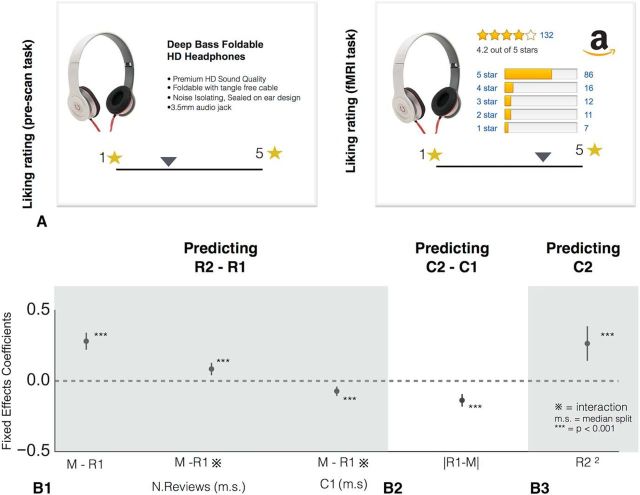Figure 1.
A, Task: In part 1 (before scanning), the participant is presented with a series of products from the retail website Amazon (e.g., headphones). The participant enters his/her liking rating R1 followed by his/her confidence rating C1 in the liking rating (not shown the in figure schematic above). In the part 2 (inside of the scanner), the participant sees the same item again, this time together with real reviews from the Amazon website: the mean of the reviews (1–5 stars), the number of reviewers, and a 5-bar histogram showing the distribution of ratings across reviewers. At this stage, the participant is required to enter a new liking R2 and confidence rating C2. All effects predicted by the Bayesian account are significant in the appropriate direction. Shown are fixed effects coefficients from hierarchical linear regression models predicting rating update (R2 − R1) (B1), confidence update (C2 − C1) (B2), and second confidence rating (C2) (B3) for the following predictors: initial deviation from the group (M − R1), interaction between the initial deviation from the group and number of reviews (M − R1
 N), interaction between the initial deviation from the group and first confidence rating (M − R1
N), interaction between the initial deviation from the group and first confidence rating (M − R1
 C1), absolute difference in a participant's initial product rating and the group consensus (|R1 − M|), quadratic function of product rating (R22). Error bars indicate 95% CI. ***p < 0.001. m.s., Median split.
C1), absolute difference in a participant's initial product rating and the group consensus (|R1 − M|), quadratic function of product rating (R22). Error bars indicate 95% CI. ***p < 0.001. m.s., Median split.

